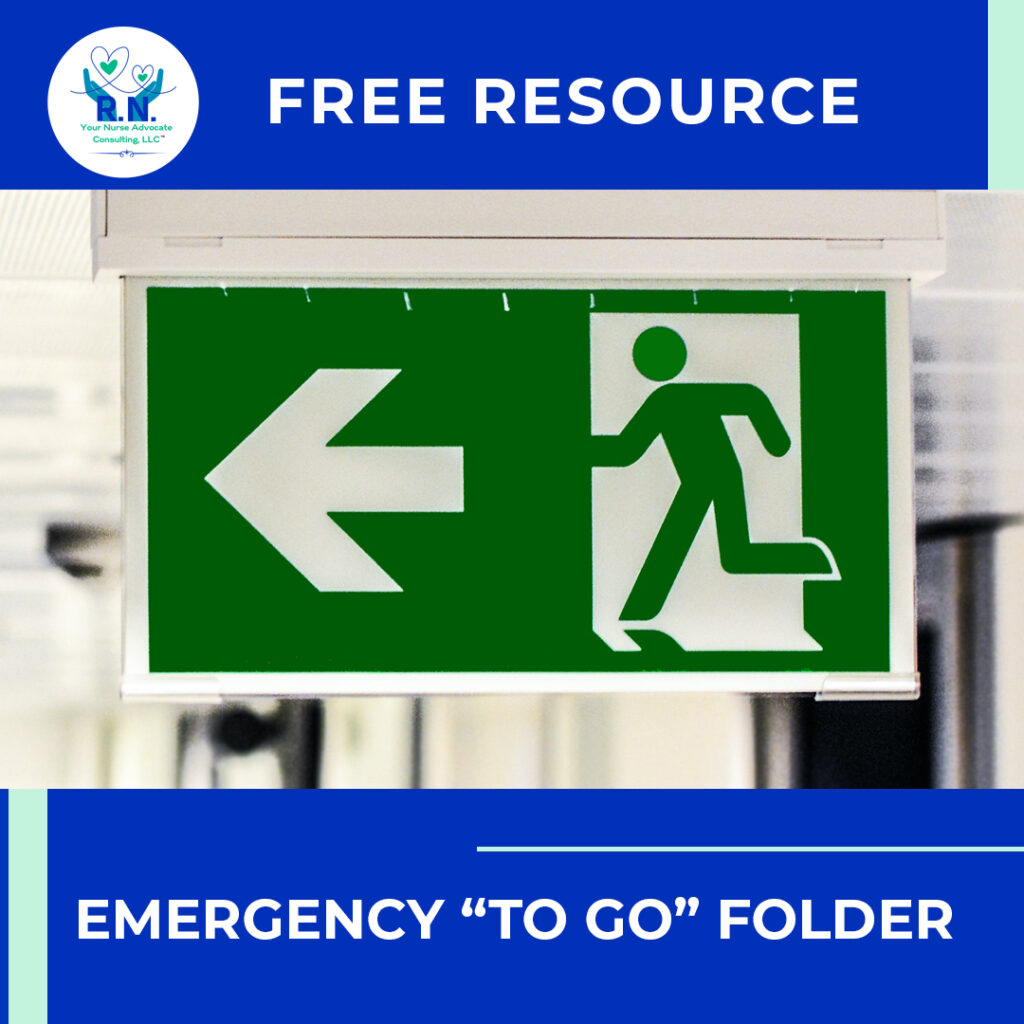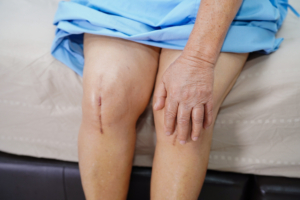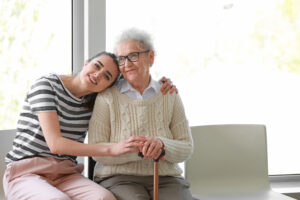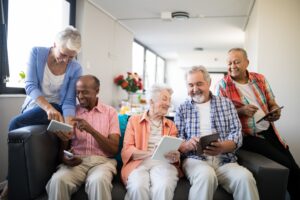Aging in place is a senior care trend that we can’t ignore. The first step in making this a reality is to safeguard the home to allow a future of aging in place. Navigating the golden years of our lives or those of our loved ones brings with it a mix of challenges and blessings.
The comfort of aging in place, in the warmth and familiarity of one’s own home, is a blessing many of us hope for. Yet, it comes with its set of challenges, especially when it comes to ensuring a safe living environment. My own experience with my mother-in-law, a spirited and independent soul who cherished her autonomy, underscored the critical importance of home safety. A fall, resulting in a tragic head injury, abruptly ended her story and left us with profound lessons on the fragility of life and the importance of being proactive with safety measures.
She just celebrated her 90th birthday just 2 weeks prior to her fall. She was independent at home, but we could see her becoming more frail. We were exploring the choices at hand to help her maintain her independence while providing more support. An unexpected fall leaving church became a tragic end to her life.
Over these next few weeks, we will take a much closer look at aging in place. We are going to break it down for you leading up to our Free Webinar where you can begin to look at how these steps can be incorporated into your specific family situation. We will look at what plans need to be put into place to successfully prepare to age in place.
Common Home Hazards for Seniors
The reality is that as we age, our homes, once comforting havens, can transform into challenging obstacle courses. Typical risks such as loose rugs, insufficient lighting, and cluttered pathways become magnified for seniors, who may face diminished mobility or vision. These hazards, seemingly just a part of our normal house in our younger years, pose significant risks, including the danger of falls, which can have devastating consequences.
Simple Home Modifications for Safety
Creating a secure environment doesn’t have to be a complex task. Small, thoughtful modifications can make a big difference in mitigating risks and enhancing peace of mind for both seniors and their caregivers. Here are some practical steps to consider:
- Light Up Your World: Ensure that all areas of the home, especially hallways, bathrooms, and staircases, are well-lit. Night lights can guide the way during the dark hours, providing security and comfort.
- Floor Safety: Secure rugs and carpets firmly to the floor or consider removing them altogether to prevent tripping hazards. Non-slip mats in the bathroom and kitchen can also help prevent falls. This is a very common cause of tripping and falling in our homes.
- Grab Bars and Handrails: Installing grab bars in the bathroom near the toilet and in the shower, as well as handrails along staircases, provides essential support for navigating these high-risk areas. High rise toilet seats can also be a big benefit. What about those walk-in tubs are they all they are said they are?
- Declutter and Organize: Keeping the home organized and free from clutter ensures clear, wide pathways, reducing the risk of trips and falls. This step is crucial in maintaining a safe environment.
- Kitchen Adjustments: Lowering shelves and ensuring that frequently used items are within easy reach can make a significant difference in the kitchen, a place where independence is often cherished.
- Entrance Ways: Can you fit a wheelchair or walker into the bathroom? How will they get into the home? Would a ramp be beneficial?

The Role of Technology in Home Safety
Technology offers innovative solutions to enhance the safety of seniors living independently:
- Wearable Alert Systems: Devices that can be worn around the neck or wrist allow seniors to easily call for help in an emergency.
- Smart Home Devices: From automatic lights to smart locks and cameras, technology can offer both convenience and an added layer of security.
- Medication reminder pill boxes and dispensers along with phone apps to let you know if you have taken your medication on time.
- Doorbell cameras
- Phone apps
Planning for Emergencies
Despite our best efforts, emergencies can and do happen. Having a clear, effective emergency plan is crucial. This plan should include easy access to emergency contacts for both the senior and caregivers, as well as a list of medications and medical conditions. Regular check-ins can also ensure that should an emergency arise, help is not far behind. We have a free “fill in the blank” Emergency “To Go” folder checklist to have this ready at all times for your loved one.
Creating a safe living environment for aging in place is not just about making physical modifications to a home; it’s about fostering a space that supports independence and provides peace of mind for both seniors and their caregivers. By taking proactive steps and utilizing available resources and technology, we can ensure that the home remains a secure and comforting sanctuary through the years.
Remember, aging in place safely is a dynamic process that requires ongoing attention and adaptation. Regular assessments of the home environment, coupled with an openness to making necessary changes, can empower seniors to live their later years with dignity and grace.
Using a patient or nurse advocate can help you stay on top of a changing situation. Modify the plans as needed while taking into account their healthcare goals and plan to continue to age in place. Learn more about Your Nurse Advocate Consulting.
Safeguarding the home is not just about preventing accidents; it’s about nurturing a space where our loved ones can thrive, surrounded by their memories and the peace of their own home.
Regular assessments of the home environment, coupled with an openness to making necessary changes, can empower seniors to live their later years with dignity and grace.

Conclusion
Creating a secure environment for aging in place requires thoughtful consideration and proactive measures. By identifying potential hazards and implementing simple modifications, we can ensure our homes remain safe havens as we age.
Technology offers additional layers of security, while an effective emergency plan primes us for unforeseen situations. Our homes are reflections of our lives—full of memories, milestones, and dreams for the future. Safeguarding them means not only protecting a physical space but preserving our independence and dignity in our later years.
If you want to continue this conversation on what it takes to plan for aging in place, we encourage you to consider joining us for our Free Webinar as we do a deep dive into aging in place. We will have an accompanying workbook for you to take notes as well as jot down specific tips and strategies that apply to your own unique situation.
Thanks for stopping by and joining us for this series on Aging in Place. Over the next few weeks we will be highlighting the plans and strategies needed to successfully plan for aging in place. There are a lot of things to consider. Planning ahead and considering the help of a patient or nurse advocate can give you that layer of expert advice as you begin the planning process.
Take care and see you back here soon,
Pam and Linda
Your Nurse Advocates
Resources
Free Resource: 11 Signs Your Aging Parents May Not be Safe in Their Home:
Your Nurse Advocate Consulting Free Resource Collection
Free 30-Minute Consultation with Your Nurse Advocates
Learn How to Have a R.N. in Your Back Pocket
https://www.nia.nih.gov/health/aging-place/aging-place-growing-older-home#safe




